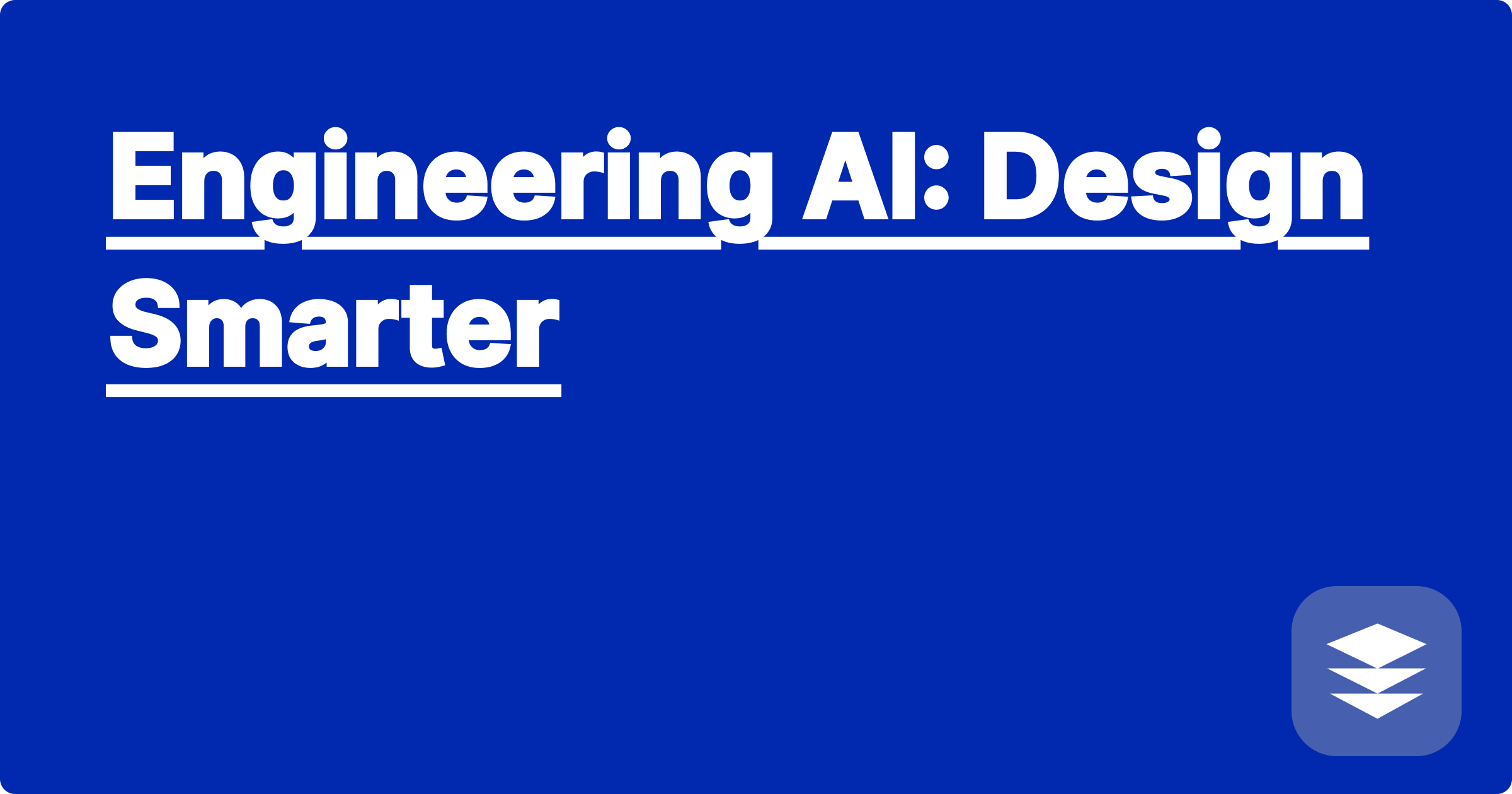
The intersection of artificial intelligence and engineering design presents a transformative opportunity for STEM students and researchers. Traditional design processes, often iterative and resource-intensive, can be significantly enhanced through the strategic application of AI. By leveraging AI's ability to analyze vast datasets, identify patterns, and generate innovative solutions, engineers can design smarter, faster, and more efficiently, pushing the boundaries of what's possible.
This shift towards AI-driven design has profound implications for STEM education and research. Students and researchers who embrace these technologies will be better equipped to tackle complex engineering challenges, develop cutting-edge solutions, and contribute meaningfully to their fields. Mastering AI-powered design tools is no longer optional; it's a necessity for staying competitive in the rapidly evolving landscape of modern engineering. This post will delve into the practical application of AI in engineering design, providing a comprehensive guide for STEM students and researchers.
The traditional design process often involves a significant amount of trial and error, requiring extensive experimentation and prototyping. This can be particularly challenging when dealing with complex systems with numerous interacting components. Identifying optimal design parameters can be time-consuming and expensive, especially when exploring a large design space. Furthermore, traditional methods may struggle to capture the intricate relationships between design variables and system performance, limiting the ability to achieve truly optimized solutions. This poses a significant hurdle for engineers striving to develop innovative and high-performing systems.
Engineering design often involves optimizing complex systems with numerous interacting components. Consider the design of a wind turbine, where factors like blade geometry, material properties, and generator efficiency all contribute to overall performance. Traditional optimization methods can become computationally expensive and time-consuming when exploring the vast design space of such a system. Furthermore, accurately modeling the complex aerodynamic interactions and structural behavior of the turbine blades presents a significant challenge. These complexities necessitate a more intelligent and efficient approach to design optimization.
AI tools like ChatGPT, Claude, and Wolfram Alpha can revolutionize the engineering design process. ChatGPT and Claude can be used to generate design ideas, explore different design concepts, and even assist in writing code for simulations. Wolfram Alpha, with its powerful computational engine, can perform complex calculations, analyze data, and provide insights into the behavior of complex systems. By integrating these tools into the design workflow, engineers can automate tedious tasks, explore a wider range of design options, and ultimately arrive at more optimized solutions.
Begin by clearly defining the design problem and identifying the key design variables and performance metrics. This involves specifying the objective function, which represents the quantity to be maximized or minimized, and the constraints that limit the feasible design space. Next, gather relevant data related to the problem, including material properties, experimental results, and existing design knowledge. This data will be used to train and validate the AI models. Then, choose an appropriate AI tool based on the specific needs of the project. For example, ChatGPT can be used to generate initial design concepts, while Wolfram Alpha can be used for detailed performance analysis. Implement the chosen AI tool, training it on the collected data and fine-tuning its parameters to achieve optimal performance. Finally, validate the results obtained from the AI model using simulations or experiments, ensuring that the proposed design meets the desired performance criteria.
Consider designing a lightweight composite material for an aircraft wing. Using Wolfram Alpha, one can explore different material combinations and calculate their resulting mechanical properties, such as strength and stiffness. For instance, the formula for calculating the effective Young's modulus of a composite material can be directly inputted into Wolfram Alpha for quick evaluation. Furthermore, ChatGPT can be used to generate code for finite element analysis (FEA) simulations, allowing engineers to assess the structural integrity of the wing under various loading conditions. This integrated approach enables rapid prototyping and optimization of the composite material design, significantly reducing development time and cost.
Another example involves optimizing the geometry of a heat sink for electronic cooling. Using AI-powered tools, one can explore a vast design space of fin configurations and dimensions. The AI model can predict the heat transfer performance of each design, identifying the optimal geometry that minimizes the temperature rise of the electronic component. This automated optimization process can significantly outperform traditional methods, leading to more efficient and compact heat sink designs.
For STEM students and researchers, effectively leveraging AI tools requires a shift in mindset. Embrace a data-driven approach to design, focusing on collecting and analyzing data to inform design decisions. Develop proficiency in programming languages like Python, which are essential for interacting with many AI tools. Actively explore and experiment with different AI platforms and algorithms to understand their strengths and limitations. Collaborate with other researchers and share knowledge to accelerate the adoption of AI in your field. Finally, critically evaluate the results generated by AI tools, ensuring that they align with physical principles and engineering intuition.
To take the next step in integrating AI into your engineering design workflow, start by identifying a specific design problem you are currently working on. Research and select the most appropriate AI tools for your specific application. Begin with a small-scale pilot project to gain practical experience and build confidence in using these tools. Document your findings and share your experiences with your peers. Continuously learn and adapt to the rapidly evolving landscape of AI-powered design, staying at the forefront of this transformative field.
STEM Scholarships: Find Your Perfect Fit
Ace STEM Homework: AI-Powered Help
AI in Labs: Boost Your Research
STEM Exam Prep: AI-Driven Success
Engineering AI: Design Smarter
Solve STEM Problems: AI Assist
Data Analysis: AI-Powered Tools